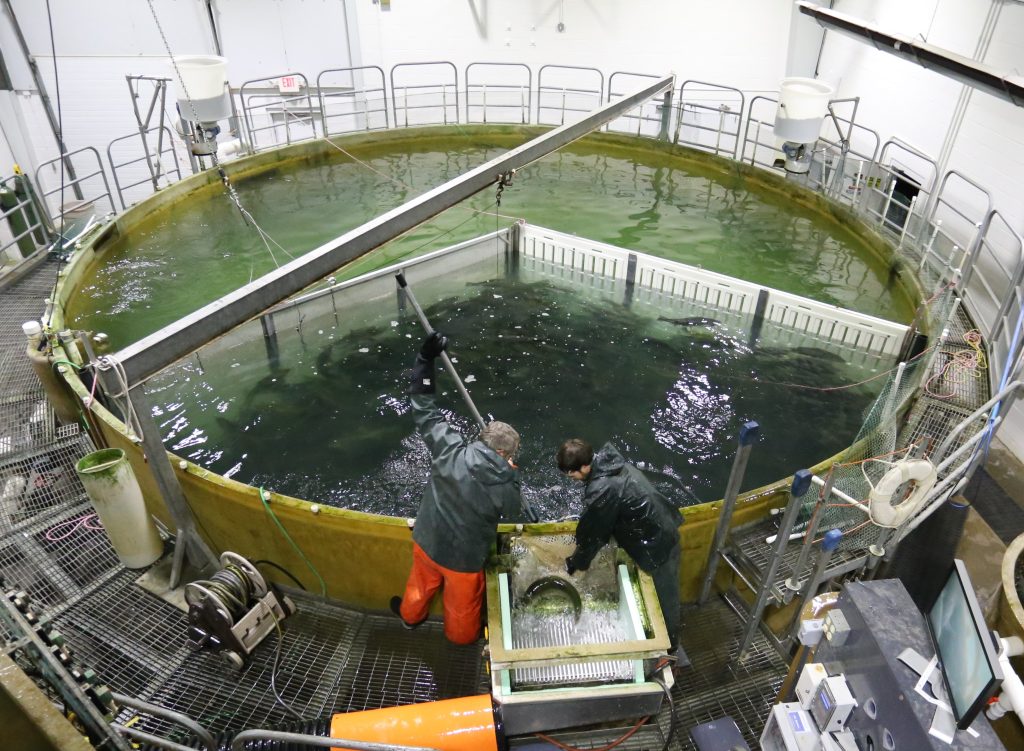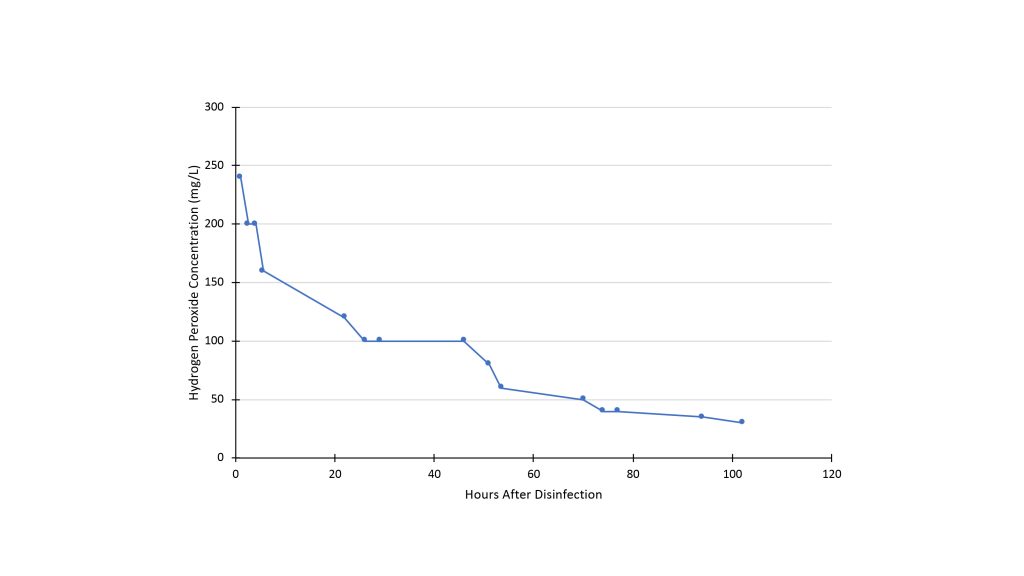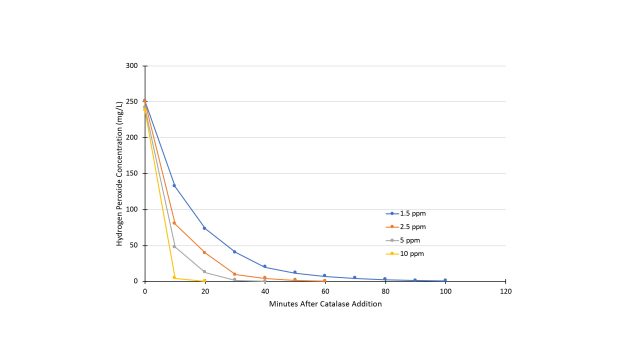
Features
Fresh Tips: Disinfecting RAS with hydrogen peroxide
September 12, 2022 By From the experts at the Freshwater Institute
 Crowded tank harvest (Photo: Freshwater Institute)
Crowded tank harvest (Photo: Freshwater Institute) Disinfecting procedures for RAS are an important aspect of farm biosecurity plans and a preparation step for successful purging of off-flavour. At the Freshwater Institute, RAS are commonly disinfected with a hydrogen peroxide concentration of 200-300 mg/L held for two hours of contact time.
In a recent survey, considerations of residual chemical were a top-ranked disinfectant selection criteria for RAS facilities in North America. Residual hydrogen peroxide discharged from a disinfected system could be harmful to biofilters if reused in RAS, plants if used for aquaponics, or the receiving environment.
Natural Decay
Hydrogen peroxide dissociates into oxygen and water. However, the rate of dissociation in a clean disinfected system is unknown.
To determine the time needed for hydrogen peroxide residuals to dissociate, an 18 m3 partial reuse purge system was cleaned and disinfected according to Freshwater Institute standard operating procedures.
Following disinfection, the partial reuse purge system was run on a 100% recirculating loop for four days and tested for hydrogen peroxide concentration using Hach test kits. Hydrogen peroxide concentrations remaining in the system were approximately 100, 50, and 30 mg/L two-, three-, and four-days following disinfection, respectively (Figure 1).

Figure 1. Natural Hydrogen Peroxide Decay
This relatively long wait time could make natural decay of hydrogen peroxide unfeasible, in terms of scheduling system restocking and may allow off-flavour producing bacteria to recolonize RAS prior to completing a purge cycle.
Enzymatic Decay
The Freshwater Institute recently completed trials investigating enzymatic decay to neutralize residual hydrogen peroxide with BioRAS Balance catalase. Twelve 5.4 m3 partial reuse systems were cleaned and disinfected with hydrogen peroxide.
Following disinfection, 1.5, 2.5, 5, and 10 mg/L concentrations of catalase were added to three replicate partial reuse systems. Catalase resulted in rapid decay of 250 mg/L concentrations of hydrogen peroxide and eliminated residual chemical in as little as 20 to 100 minutes (Figure 2).
Decay occurred in a dose response relationship. Effective methods of neutralizing residual hydrogen peroxide could allow for timely release of water from disinfected systems, more rapid preparation of RAS scheduled to receive fish, and mitigate risks associated with residual laden water.

Figure 2. Enzymatic Decay of Hydrogen Peroxide
Implications For Therapeutic Treatment
Though an effective treatment for several finfish diseases, hydrogen peroxide can negatively impact nitrifying bacteria populations if added to RAS and lead to toxic total ammonia and nitrite nitrogen concentrations.
Incorporating a biofilter bypass loop could allow an operator to successfully treat a short-cycled RAS or static culture tank with a therapeutic dose of hydrogen peroxide and neutralize residual chemical before returning flow to the biofilter.
This would equip RAS operators with more options for disease treatment. However, this technique would require additional research. Rapid decay of hydrogen peroxide from catalase resulted in dissolved oxygen concentrations exceeding 300% saturation. Temporary exposure to supersaturated water could induce a physiological response depending on fish species, life stage, or duration.
Though shown to have no toxicological effects on aquatic species and already used in food applications, the effect of BioRAS Balance dosed water on biofiltration, fish health, and food safety should be confirmed before use in RAS housing fish.
References:
- May, T., Good, C., Redman, N., Vinci, B., Xu, F., Henrick Østergaard, L., Mann, K. (2022) Efficacy of BioRas Balance (an enzyme product) to break down hydrogen peroxide following routine treatment applications in aquaculture. Aquaculture Research
- Lazado, C. & Good, C. (2021) Survey findings of disinfection strategies at selected Norwegian and North American land-based RAS facilities: A comparative insight. Aquaculture
Print this page